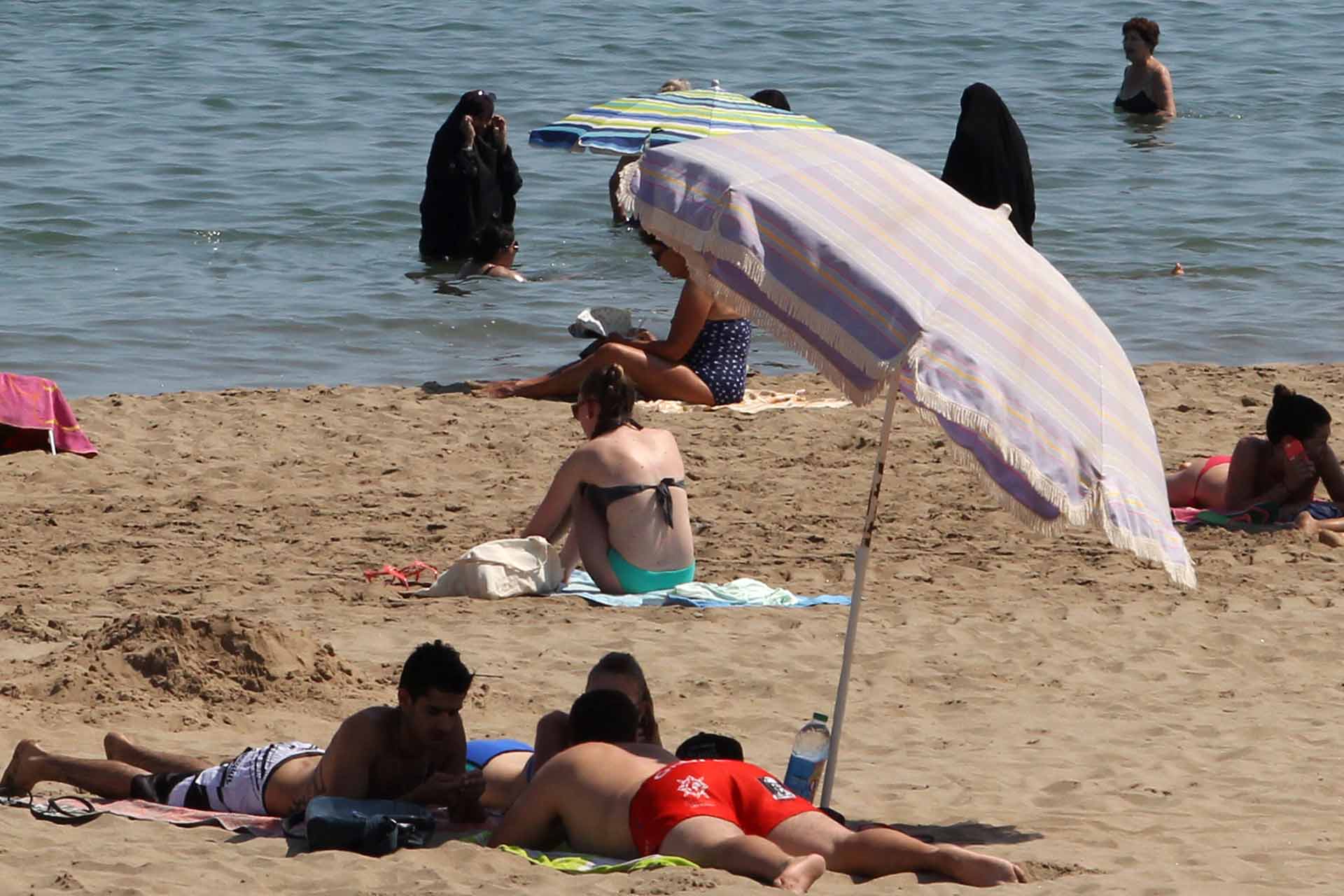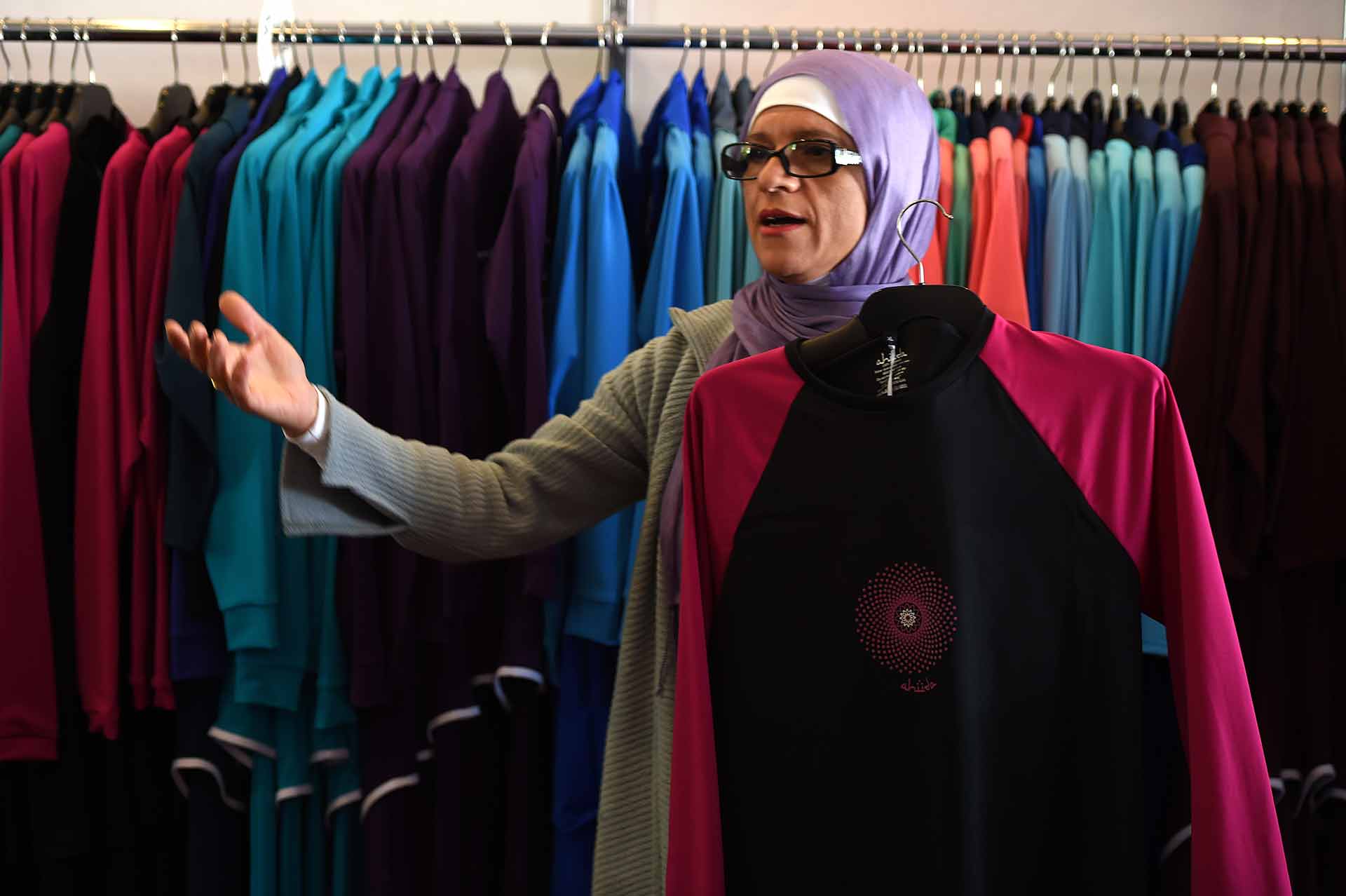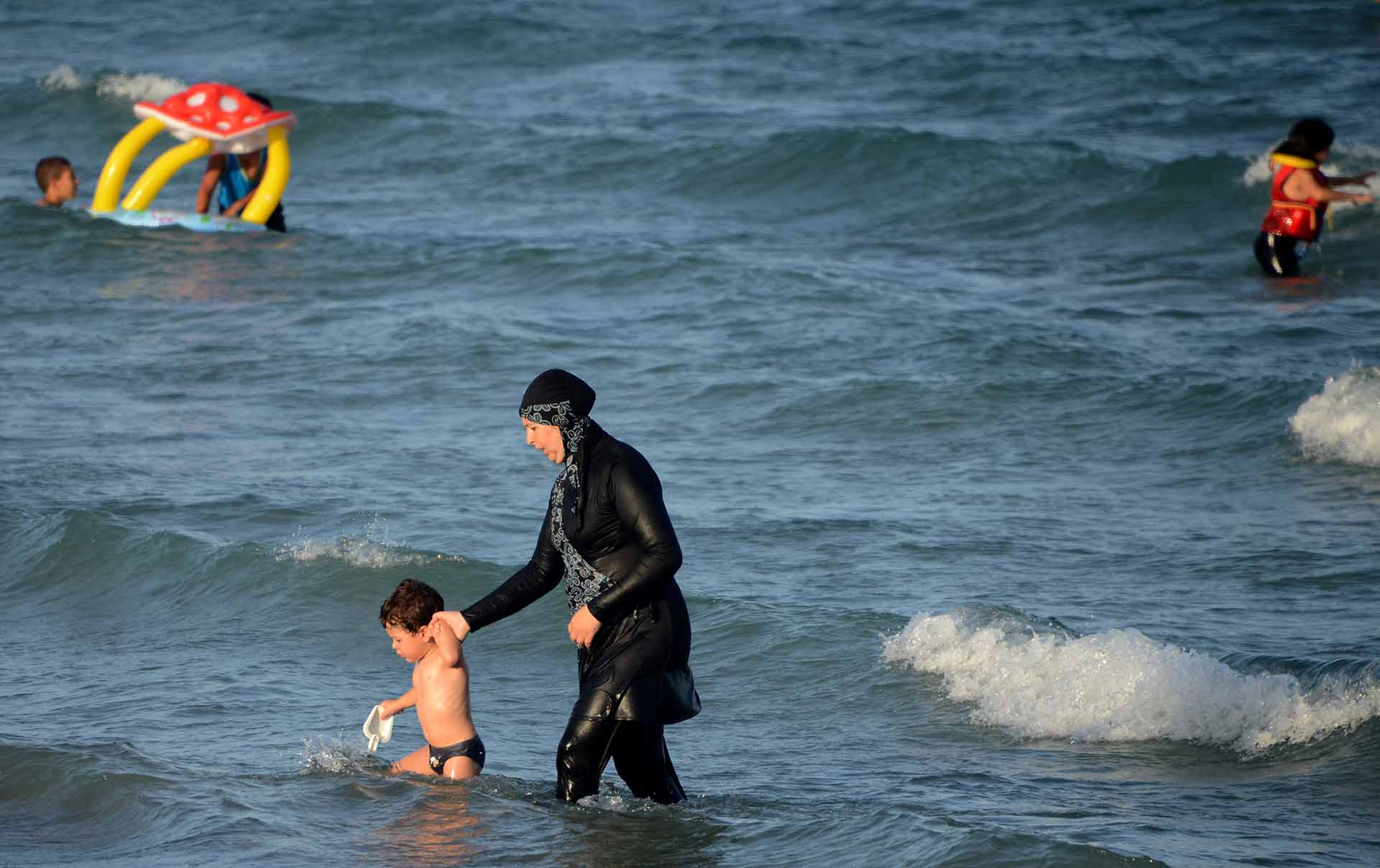At least 30 towns in France, mainly along the country’s famed Riviera, have banned women from wearing full-body bathing suits, claiming that a ban is needed for security following attacks by Islamic extremists, to maintain public order, and in accordance with the country’s strict laws on secularism.

A photo taken on June 4, 2015 shows two Muslim women wearing chador as they enjoy their time with other people a beach of Narbonne, southern France. (AFP PHOTO / Raymond Roig)
On Friday, France’s highest court overturned a ban in the town of Villeneuve-Loubet saying that it infringed on people’s “personal freedom” and “freedom of conscience”. The court also found that the town overstepped powers and there was no justification for risks to public order or for reasons of “hygiene or decency.”
Images of Muslim women on French beaches being forced to remove clothing have shocked people across the globe and led to widespread use on social media of the word “burkini” — a neologism that blends “bikini” and “burqa”, a dress worn by some Muslim women.
Here’s all you need to know about this type of swimwear.
W
hat is a burkini?
A burkini is a swimsuit that covers the arms, legs, and head of the wearer and leaves only the hands and face uncovered. They come in one, two, or three pieces depending on the maker and have varying levels of looseness.
It typically consists of a hood that covers the head, a tunic that hits anywhere from the mid thigh to the knee and straight leg pants. Some pants have the option to be cinched at the hem to prevent them from riding up. Many burkinis are also marketed as UV-ray- and chlorine-resistant.

W
ho wears burkinis?
Many Muslim women choose to wear a burkini in observance of their religion which says that people should dress modestly.
However, a growing number of non-Muslim women also wear burkinis.
Aheda Zanetti, the Australian maker of one line of popular burkinis has sold 700,000 swimsuits around the globe under her label Ahiida.

Australian-Lebanese designer Aheda Zanetti explains her products of burkini swimsuits at a shop in western Sydney on August 19, 2016. (AFP PHOTO / Saeed Khan)
Zanetti told the Sydney Morning Herald that 45 percent of her clients are non-Muslims.
Many of her clients are non-Mulsims looking for more coverage in their swimwear.
“We get so many emails from people asking ‘Would the Islamic community be offended if I purchase a burkini swimsuit?'” Zanetti told the Sydney Morning Herald.
CCTV’s Greg Navarro interviewed Zanetti about her company:

W
hat does the Quran say about dress?
According to the Council on American-Islamic Relations, Muslims believe “modesty encourages society to value individuals for their wisdom, skills and contribution to the community, rather than for physical attractiveness.”
“Men and boys are always to be covered from the navel to the knee. Also, some male Muslim students wear a small head covering, called a kufi. When in public, Muslim women wear loose-fitting, non-revealing clothing, known as hijab, or khimar. This attire, which may vary in style, includes a head covering,” CAIR writes in “An educator’s guide to Islamic religious practices.”
The nonprofit Ahlul Bayt Digital Islamic Library Project cites four passages in the Quran that relate to dress.
Two passages say that men and women “should cast down their glances and guard their private parts.”

Source: Ahlul Bayt Digital Islamic Library Project

Source: Ahlul Bayt Digital Islamic Library Project
A third passage says women should “…not display their beauty except what is apparent, and they should place their khumur [a veil or scarf that covers the head] over their bosoms…”

Source: Ahlul Bayt Digital Islamic Library Project
“The meaning of khimar and the context in which the verse was revealed clearly talks about concealing the head and then using the loose ends of the scarf to conceal the neck and the bosom,” the library said in an online post.
And a fourth passage listing the mahram, or male family members in whose presence the hijab is not required, says: “O Prophet! Say to your wives, your daughters, and the women of the believers that: they should let down upon themselves their jalabib.”

Source: Ahlul Bayt Digital Islamic Library Project
The library cites various dictionaries that define a “jalabib” as a loose outer garment or “a wide dress, wider than the scarf and shorter than a robe, that a woman puts upon her head and lets it down on her bosom.”
These are arguments that dress should be long and loose and more than just cover the head, neck and bosom, the library said.
W
hat will happen now in France?

Women join a demonstration organised by “Stand up to Racism” outside the French Embassy in London on August 26, 2016 against the Burkini ban on French beaches. (AFP PHOTO / Justin Tallis)
Many experts believe the ruling by France’s highest court will set a precedence for other towns that also ban burkinis.
However some communities have said they will still enforce their ban. Some French politicians have also called for a nationwide ban on headscarves and burkinis.
“Here the tension is very, very, very high and I won’t withdraw it,” Ange-Pierre Vivoni, mayor of the Corsican town of Sisco, said on BFM-TV of his town’s ban.
Those opposed to the measures say that legal action should be taken against the towns that still impose a ban. Time will tell if those bans are also overturned.
Story by CCTV America with information from the Associated Press.
 CGTN America
CGTN America A Moroccan woman wearing a “burkini” (C), a full-body swimsuit designed for Muslim women, enters the sea at Oued Charrat beach, near the capital Rabat, on August 17, 2016. (AFP Photo / Fadel Senna)
A Moroccan woman wearing a “burkini” (C), a full-body swimsuit designed for Muslim women, enters the sea at Oued Charrat beach, near the capital Rabat, on August 17, 2016. (AFP Photo / Fadel Senna)

